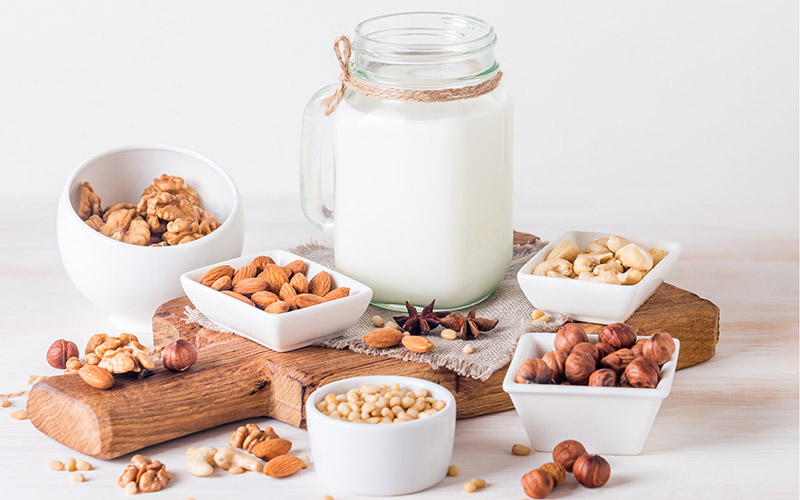In early January 2025, the FDA issued its final guidance document on food allergen labeling. It replaced guidance documents that were issued in November 2022. While it doesn’t directly apply to soap or cosmetics, some of the points in it may be of interest to soap and cosmetic makers who use those ingredients in their products.
Food Allergen Labeling
The Food Drug and Cosmetic Act requires that “major food allergens” must be identified on a food product label if they are present in the food.
The major food allergens are defined as:
- Milk
- Eggs
- Peanuts
- Wheat
- Soybeans
- Sesame
- Fish (such as bass, flounder, cod)
- Crustacean shellfish (such as crab, lobster, shrimp)
- Tree nuts (such as almonds, walnuts, pecans)
Since those allergens are defined in the Food Drug and Cosmetic Act itself, they can’t be changed.
What the FDA has done with this recent guidance document is clarify “the current thinking” of the agency–including what is included in each of those major food allergens groups. You can read the complete document here.
Food Allergens in Soap and Cosmetics
While there is certainly a distinction between eating a food that contains an allergen and putting it on your skin, for some who are severely allergic that may be a distinction without a difference.
The following gives some details from the FDA’s recent food allergy guidance as it applies to foods that are used as ingredients in soap or cosmetic products.
Milk
Milk from domesticated cows, goats, sheep, or other ruminants. (Note that it does NOT include vegetable “milk” such as “soy milk” or “almond milk.”) It does include goat’s milk, a common ingredient in soap and cosmetics. It would also include butter or cream from the animals named.
Peanuts
Whole peanuts or peanut butter are not commonly used in cosmetics anymore. Highly refined peanut oil, sometimes used in soap and cosmetics, is not considered a major food allergen (and is generally safe for those with a peanut allergy). Cold-pressed peanut oil is definitely a food allergen. For an interesting tidbit about peanuts in cosmetics, see George Washington Carver’s Peanut Lotion
Wheat
Straight wheat or wheat flour is not normally used in cosmetics, but there are some cosmetic ingredients derived from wheat, such as hydrolyzed wheat protein.
Soybeans
Whole soybeans are not normally used in cosmetics. Some cosmetic ingredients may be derived from soybeans. Highly processed and refined soybean oil is not considered a major food allergen.
Tree Nuts
The FDA has indicated that the following nuts are considered “tree nuts” as applied to major food allergens:
- Almond
- Brazil Nut
- Cashew
- Filbert/Hazelnut
- Macadamia
- Pecan
- Pine Nut
- Pistacio
- Walnut (Black, California, English, Persian, Japanese)
The earlier (2022) draft also included beech nut, butternut, chestnut, chinquapin, coconut, cola naut, ginkgo nut, hickory nut, palm nut, pili nut, shea nut, and “any other tree nut as defined by the manufacturer.”
As noted with peanuts and soybeans, highly refined oils (that is, oils that are refined, bleached, and deodorized) are exempt from major food allergen labeling. That’s because the processing removes the proteins which are the cause the allergic reaction. Cold pressed oils do NOT remove the proteins and would still be considered major food allergens.
And, of course, tree nuts would include ground nuts, nut flours, and possibly ground hulls or husks–any of which might be used in cosmetics as exfoliants.
Soap and Cosmetic Food Allergen Labeling
There are no requirements that food allergens in soap or cosmetics must be identified.
However, if you use major food allergens in your soap or cosmetic products, you have the option to identify them on your label if you feel it appropriate.
There are many specific details for allergen labeling on foods, but the very general rule of thumb is that they may be identified in one of the following ways:
- Named fully in the ingredient declaration, e.g. “goat’s milk” or “wheat starch”)
- In parenthesis, after the ingredient, e.g. “starch (wheat)”
- In a separate “contains” statement, e.g. “Contains: milk, wheat.”
In reality, for cosmetics, we don’t have the same leeway and loopholes that food manufacturers have. Generally, the required name for the ingredient generally provides all the information necessary.


Leave a Reply